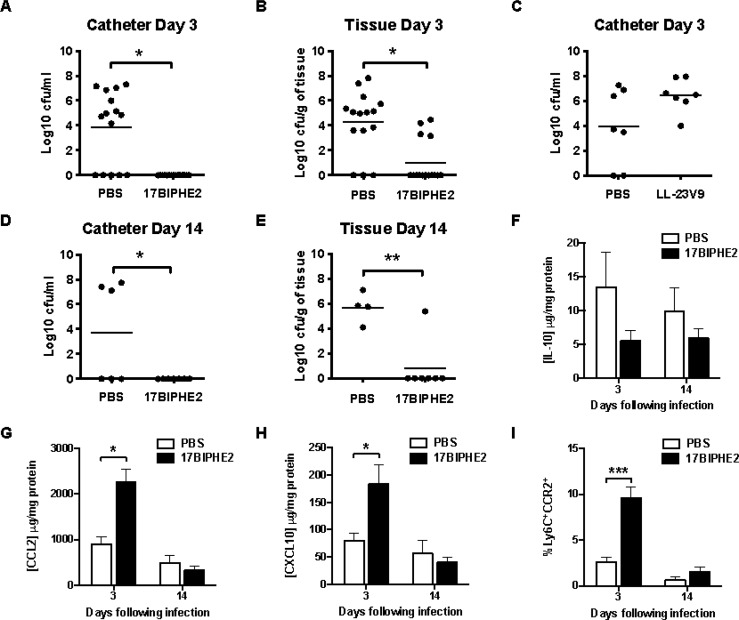Figure 2.
Prophylactic 17BIPHE2 treatment reduced bacterial burdens in S. aureus catheter-associated biofilms in vivo (A–E), down-regulated IL-10 (F), up-regulated CCL2 (G) and CXCL10 (H), and recruited monocytes (I). Mice received 200 μg injections of 17BIPHE2 (A, B, D, and E) and LL-23V9 (C) directly into the catheter at the time of infection (time 0) followed by 200 μg peptide injected subcutaneously at four different sites around the catheter, 24 and 48 h following infection. Animals were sacrificed at days 3 (A, B, and C) and 14 (D and E) following S. aureus exposure, whereupon catheters (A, C, and D) and surrounding host tissues (B and E) were recovered to quantitate bacterial burdens. Results are expressed as the number of CFU/mL for catheters or CFU/mg tissue, to correct for differences in tissue sampling size. Significant differences in bacterial burdens between PBS and peptide-treated mice are denoted by asterisks (*, p < 0.05; **, p < 0.01) with results presented from individual animals and bars representing the mean of each group (A and B: n = 16/group; C, D, and E: n = 8/group).

